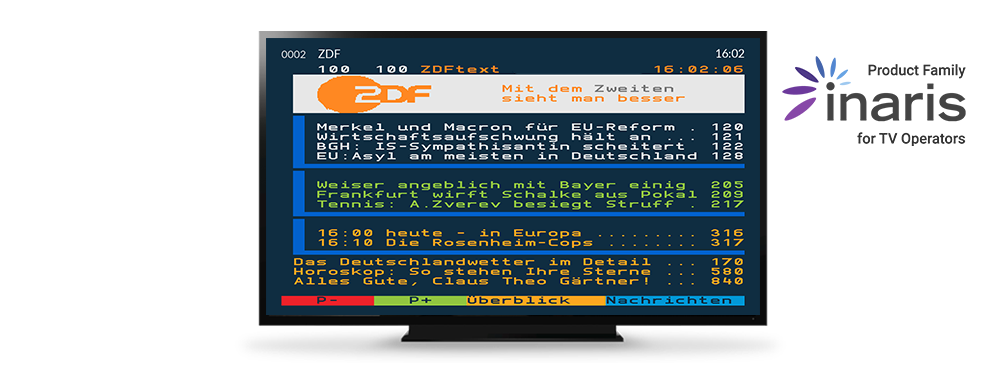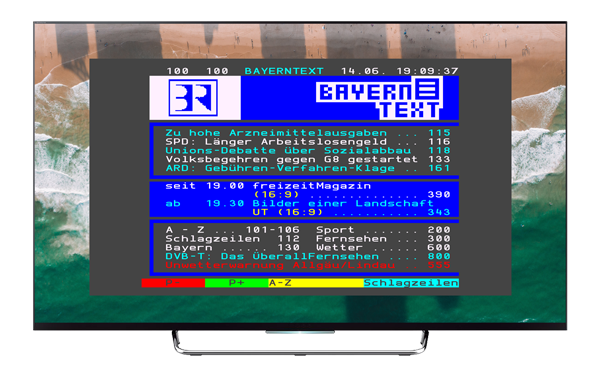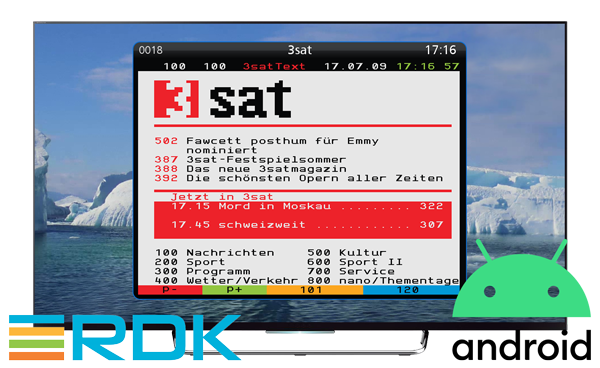Teletext
Teletext is still a very popular and well-known feature for consumer electronics (CE) devices. We have more than 30 years of experience with Teletext and developed one of the first Level 2.5 decoders. Originally created for analogue TV, our Teletext Decoder was migrated to DVB and is meanwhile also used in OTT streaming scenarios. Our Teletext Decoder is deployed in millions of devices worldwide based on various SoCs. Furthermore, we offer our Teletext True Type Font which ensures good readability and high-quality character rendering on nowadays high-resolution displays. Our Teletext Solution comes in two flavours: the classic Teletext for devices without IP connectivity and the Teletext for Smart Devices with IP connectivity.
Teletext Features
Our Teletext Solution supports the following features:
- Teletext Level 1.5 and 2.5
- TOP and FLOF navigation (based on colour keys)
- Sub-page navigation
- Scalable database from 10 pages up to 4000 pages
- Support of all Teletext characters sets (Latin, Greek, Cyrillic, Hebrew, Arabic, Farsi)
- Supports blinking, hold, conceal/reveal, mix-mode, zoom, split-screen
- Subtitle and newsflash display
- Page catching feature for easy cursor based navigation
- Teletext True Type Font available for high-quality text rendering
Classic Teletext
Classic Teletext is the default Teletext solution used in millions of TV and STB devices for decades. Here the whole Teletext acquisition, storage, decoding and rendering is handled in ANSI-C software, optimized for embedded systems. This classic Teletext is typically the choice for all broadcast TV devices with no or limited Internet connectivity.
Optional Binding Classes for TARA’s GUI Tool Embedded Wizard facilitate the integration of the graphics output.
Teletext for Smart Devices
Even though Teletext exists now for more than 40 years, it is still a requirement for many nowadays connected devices that use for example Android TV or RDK. For these devices we provide our Teletext for Smart Devices. This solution is separated into two parts, the Teletext Server and the Teletext Viewer. The Teletext Server can either run locally on the device itself or alternatively be hosted by the service provider. This architecture allows a clear separation between the application and the reception/storage of the Teletext pages.
Our Teletext for Smart Devices is already deployed in the field and also used within the Quickline UHD Android TV Set-Top Box project.
Local Teletext Server
When the device supports receiving transport streams either with a DVB tuner or via IPTV the Teletext pages can still be received by a Teletext Server running locally on the device. The Teletext Server receives the Teletext pages via the DVB tuner or IPTV connection, collects them in a local database and provides the pages on request to the Teletext Viewer. The Teletext Viewer is used to render the Teletext pages. This model is similar to the classic Teletext where the Teletext pages are also received and stored locally.
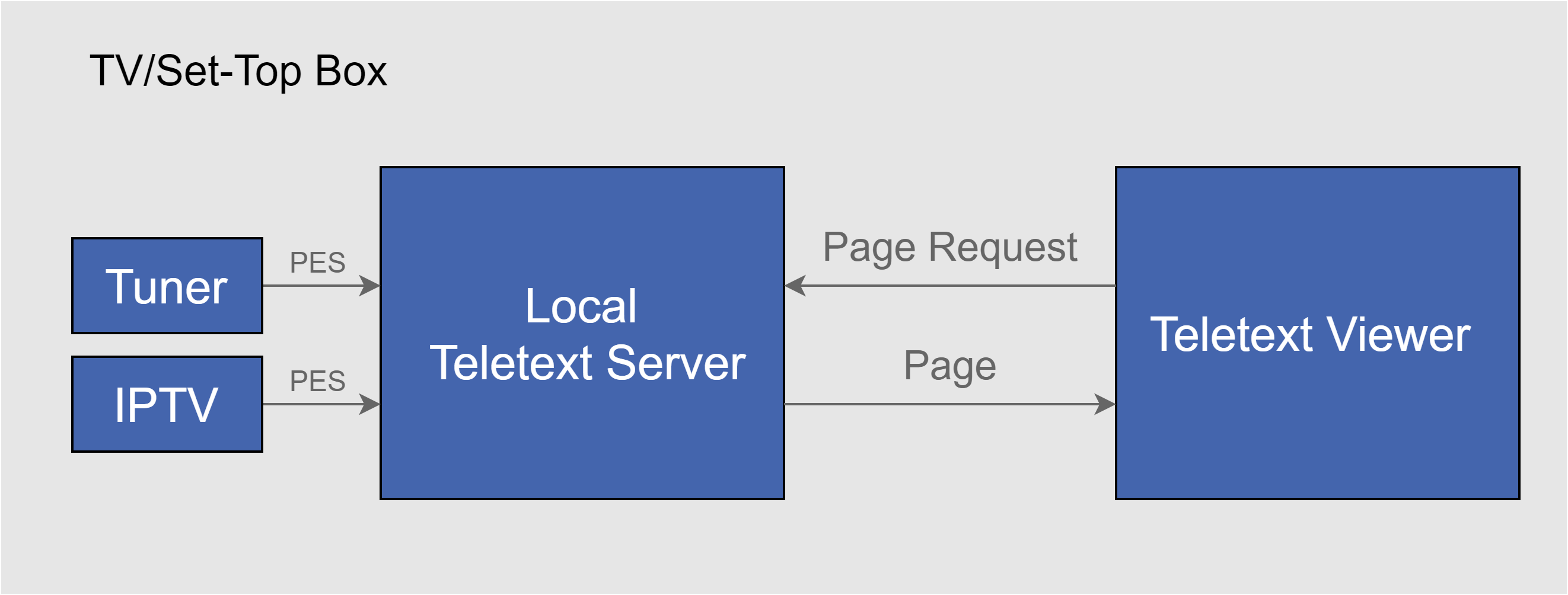
Remote Teletext Server
Smart TV devices are connected devices, which support OTT streaming for features like live TV, replay TV or network PVR. In most cases, OTT streams do not support the transmission of the Teletext data as part of the audio/video stream (e.g. with HLS or DASH).
For OTT we provide a Teletext Server hosted by the service provider. The Teletext pages are received and collected centrally by this remote Teletext Server. The Teletext pages of all TV channels are received in parallel in real-time. Each received Teletext page is stored as a file and provided to the client device via a standard HTTP protocol. The same Teletext Viewer that is used to access and render the locally received pages can also be used to access and render the pages from a remote Teletext Server.

Because the Teletext pages of all TV channels are collected in parallel, all Teletext pages of all channels are always available immediately. This is a major advantage to the local reception of the Teletext pages, where the received Teletext pages are deleted each time when the channel is changed. For hybrid DVB/IP devices, a local and a remote Teletext Server can also be used in parallel.
Teletext Viewer
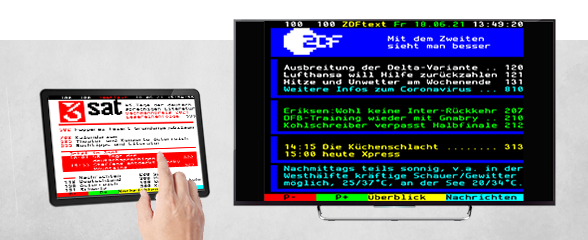
The Teletext Viewer is used to access the Teletext pages that are available on the Teletext Server and render the pages on the users’ devices. The JavaScript based web application runs on all modern browsers. All features known from the classic Teletext are also supported for our web-based Teletext Solution.
On Android TV set-top boxes the standard WebView based on the Chromium browser can be used. For RDK based Linux devices the WPE browser is supported. On these devices the Teletext is navigated with a remote control. With page catching the cursor keys on the remote control can be used to select the page numbers on a Teletext page and go to a selected page by simply pressing the OK button.
Many operators offer their OTT services also on mobile devices, like tablets or smartphones. Our Teletext Solution also supports these devices. We realized a highly intuitive operation directly via the touch screen. All page numbers on a Teletext page as well as the row of the four color buttons at the bottom of the screen can be tapped with the finger to go to the corresponding page. This allows the users to navigate through the Teletext pages in the same way as they would with web pages. Teletext has never been so easy to use.
Teletext True Type Font
In addition to the Teletext decoder, we offer our Teletext True Type font to display the Teletext data. The TrueType font ensures high-quality characters and improves readability significantly – especially on high-resolution user interfaces (e.g. UHD).
The font also contains block-mosaic graphics, as well as Arabic, Cyrillic, Farsi, Greek, Hebrew, and other characters.
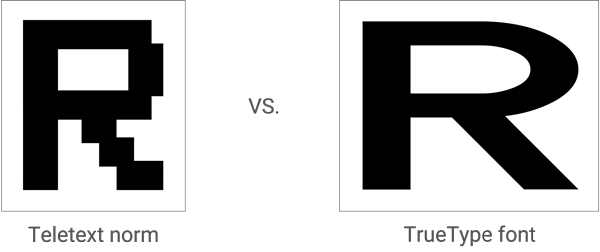
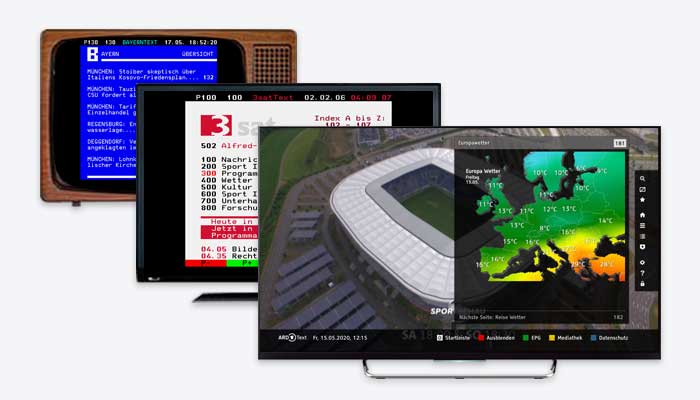
News in Focus: 40 Years of Teletext in Germany
35 Years of Teletext
The video was made by the German TV-channel “Bayerischer Rundfunk” (BR) on the topic “35 Years of Teletext” (German only). It covers Teletext and HbbTV and was partially filmed at TARA’s office.

By loading the video, you agree to YouTube's privacy policy.
Learn more


